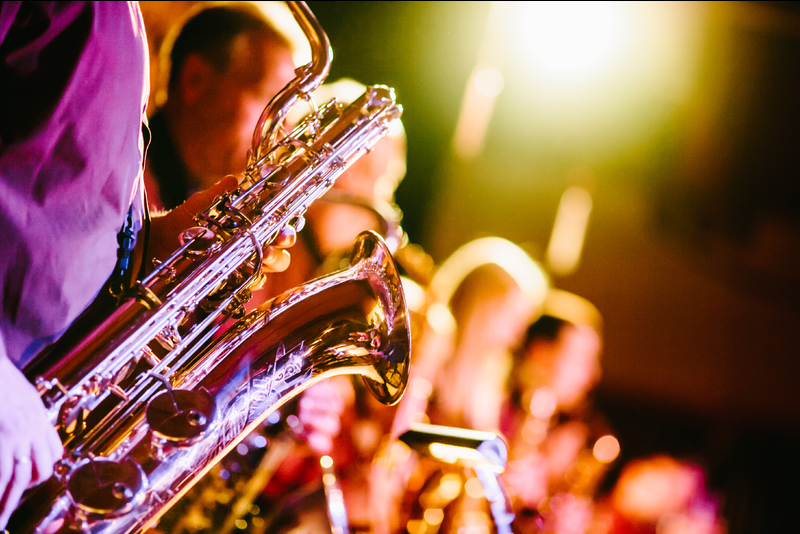The South African College of Music and Electrical Engineering working in perfect harmony
11 July 2017 | Story Carla Bernardo. Photo Gavin Whitner.
When Andrew Bailey, project manager at UCT's Research Contracts and Innovation services Department (RC&I), contacted the South African College of Music’s (SACM) Senior Lecturer Theo Herbst to ask if he was interested in collaborating on a project to develop a music transcription, he leapt at the opportunity.
The inventor was Dr Paul Cavalier, a postdoctoral researcher in the Department of Electrical Engineering, who had come up with a music application - or signal analysis method - to track and isolate signatures within music. The idea came to him during an evening out at the now-closed Tagore’s in Observatory, Cape Town.
“I remember sitting there, listening to jazz,” says Cavalier.
“I started having thoughts about the dynamics of musical notes, how they are shaped, and how they play. It was completely unexpected.”
Based on his current geophysics research, which enables the recognition of geophysical “signatures”, Cavalier decided to attempt the same process with musical instruments. He headed home and began testing his theory, finding enough encouraging results to spur on his patent signal analysis method.
Fortunately for Cavalier, Herbst immediately said yes to a collaboration between the two departments on the UCT Pre-Seed funded project. Together, with Herbst as advisor and Cavalier as principal researcher, they began testing an application that tracks the “evolution” of an isolated musical note.
Collaboration and innovation
When they began their collaborative work, the duo contacted an international expert for input and answers. They had crossed disciplinary boundaries and were now transcending national borders for support. However, it appeared that even the expert had limited answers about building an application to isolate notes.
“We then realised we were approaching a complex and difficult research question,” says Herbst. “And the moment you realise that, you know there exists potential for innovation in that field of research.”
So, Herbst and two students began recording audio to create a database of sounds for Cavalier to analyse. And it is in the results of this that Cavalier hopes to find answers to questions such as, “How does the timbre of a musical note evolve?” or “What enables us to tell different sounds apart, such as differentiating a voice from a guitar?”.
To be clear, a number of leading companies, service providers and research groups are active in this field.
“However, we are pursuing what we believe is a novel approach to the problem,” says Cavalier.
He explains that while the human ear can identify, for example, a piano or guitar playing alongside other instruments, computers struggle to do so.
“This is what we are trying to solve, this is what we are pursuing,” says Cavalier.
Application and implication
“The implications for music are manifold,” says Herbst. He adds that from an education and training perspective, the application will provide an additional tool to develop musicians' aural acuity and practical listening skills.
“A musician’s ability to hear, listen critically and to articulate what is heard has to be developed and this application promises huge benefits for this,” says Herbst.
“There are other implications that we know about and others that we are still to discover,” Cavalier says.
Looking ahead
The next stage for the duo is tying up any loose ends, prototyping and testing before approaching additional collaborators.
“To me, we are operating in a very beautiful space because we are engaged in fundamental research that has very practical applications,” says Herbst.
For Cavalier, the testing and endless questions around signals and sounds are what excite him. He is also looking forward to answering broader questions such as why and how the human ear distinguishes between sounds so effectively.
The duo is also excited to be providing a blueprint for interdisciplinary collaboration.
“We firmly believe this is the way forward, namely for the country to invest in interdisciplinary excellence in fields where the hard and soft sciences meet,” says Herbst. “I have to say, we have something special in this project and I am really looking forward to how this evolves.”
UCT acknowledges the support of the Department of Science and Technology through their National IP Management Office, which assists UCT in protecting intellectual property emanating from research.
 This work is licensed under a Creative Commons Attribution-NoDerivatives 4.0 International License.
This work is licensed under a Creative Commons Attribution-NoDerivatives 4.0 International License.
Please view the republishing articles page for more information.










